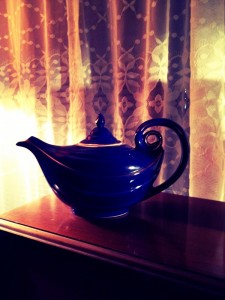Much of my blog has documented my virtual world experiences. Currently, as I explore new augmented reality apps and experience collaboration through the popular trend of MOOCs, I believe the future holds a combination of physical, virtual , and augmented experiences for learning, shopping, playing, and enjoying our lives.
Learning
I finished my role in the Summer in Berlin virtual world library exhibit with live tours. Dressed in clothes from the 1920s, I joined others from around the world to experience Berlin and shot a short machinima (below). No doubt students will explore history through virtual experience in the future, but a shared physical space will still be of great value. Any space (physical or virtual) can be misused or taken for granted. Appreciation of excellence in our learning experiences requires deep thinking and sharing with others in any space or format.
MOOCs
Massive Open Online Courses are the buzz on twitter among the edu crowd. I joined MOOC MOOC but had very little time to participate during back-to-school week. Then, I discovered an interesting mooc for younger students called the Anne Frank Mooc. The leader of the Virtual Pioneers in Second Life is a technology educator who specializes in historical immersive learning environments. Our paths have crossed numerous times at virtual world events.
MOOCs give participants an opportunity to create learning experiences on any topic across distance, much like virtual worlds (but without the high learning curve). Comparing a MOOC experience with immersive learning in virtual worlds will be interesting. I took these Animoto photos during “office hours” in the MOOC and I plan to take some machinima shots when the MOOC participants enter the Anne Frank museum virtually.
Shopping
I received an IKEA catalog in the mail this week which allows you to see furniture on your digital device through augmented reality. Obviously, augmented reality could be cost effective for companies selling products at some point in the future. For now, companies may have to invest in augmented reality applications, print materials, online shopping options, as well as physical outlets. Tough times for marketing!
Playing
I downloaded Minecraft, just to see what all the fuss was about! My students just love the game and I was curious about why chopping the ground to build out of square blocks could be so exciting. I discovered that there is pleasure in working hard to create something unique. A colleague gave me a new word for it– “playbor”! As our personal and professional lives become less separated and our home and work spaces overlap, so does our time spent on leisure activities. Playbor is a portmanteau combining play and labor.
Whew! This is a rambling post but the idea that ties it together is life experience. We learn through living— through experiences with others. That is how it has always been with human beings. I keep hearing about the exponential growth of changes due to technology. One thing has not changed. We are human beings. What a wonder….to experience.



